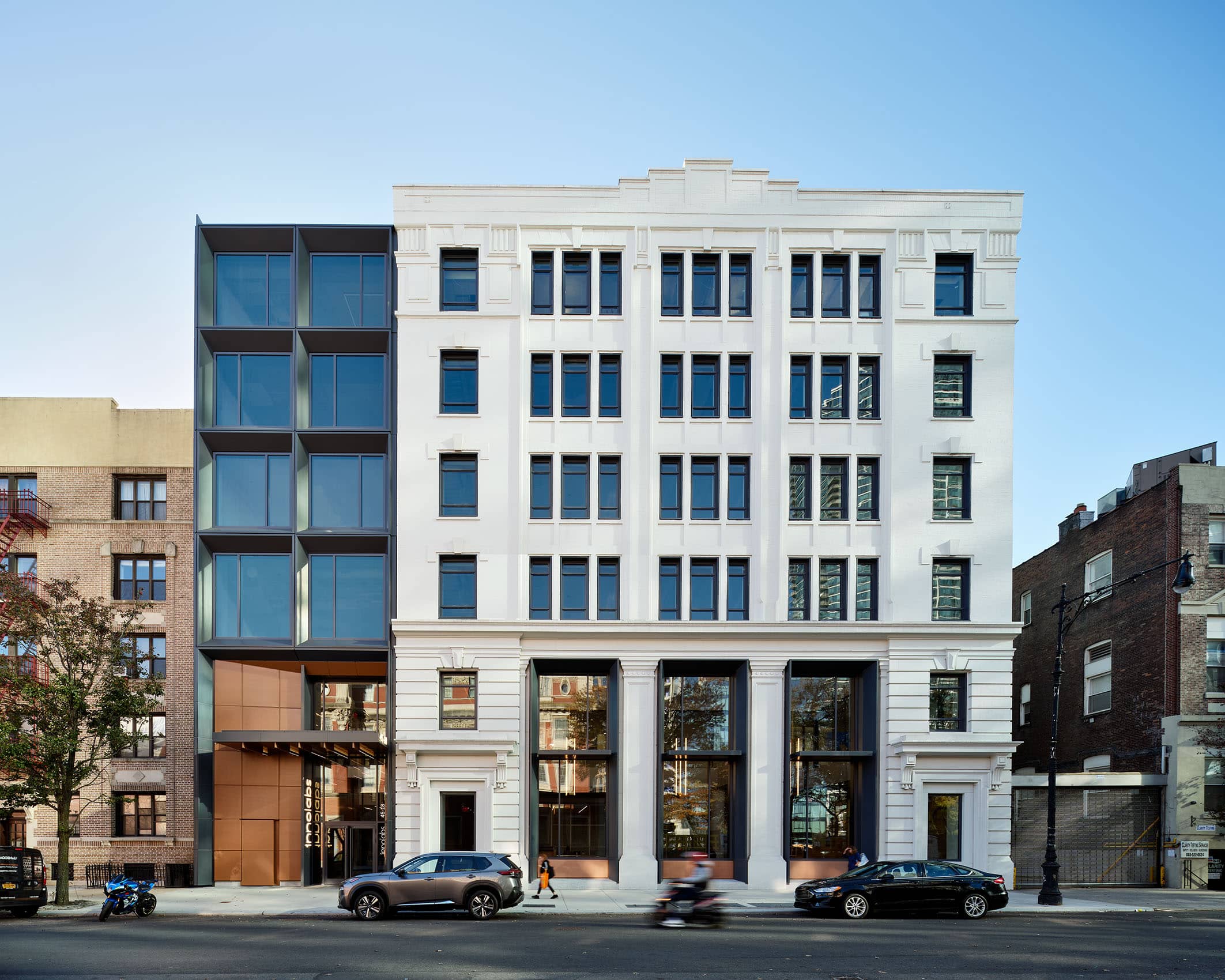As office space needs shift, an exciting new development has been the need for, and integration of, workspaces for science and technology within the fabric of the city. Bringing professionals together across many disciplines and often with highly specific spatial requirements is no easy task for architects, especially those designing for speculative commissions. A successful project leading this trend comes from Perkins&Will, whose work on Innolabs in Long Island City, Queens, (LIC) flips the STEM script: a human-scaled adaptive reuse project not only creates Class A commercial workspaces for start-up and life science tenants, but is another piece reinvigorating the unique industrial heritage of LIC.
The addition follows standardized practices of adaptive reuse, respecting delineations between “old” and “new,” and making good on the mélange of eras and styles.
“The beauty of adaptive reuse in Innolabs’s context goes beyond the aesthetic: It helps ensure that a commercial building with a very specific use positively contributes to the public realm,” said Bill Harris, regional managing director at Perkins&Will.
Adaptive reuse projects also continue to be lauded for sustainability goals, though many nearly strip the site down to its bones, calling the idea of majority “reuse” into question. Innolabs proudly uses and displays its existing form, but the interiors have been completely gutted and “reimagined” for the new crop of hyper-modern tenants—what remains beyond just floorplates and loadbearing walls? The white masonry front gleams though, catching the light and differentiating it from more modern glass contemporaries as well as from darker brick neighbors. Clever complementary treatments of the glass also shine, as darker black frames encourage the glass addition to recede into the background behind the white front. There’s a play on light and shadow instead of overreaching deconstructivist angles outlined in chrome or thick framing schemes. And of course, the reuse of existing materials and structure means that the project retains its embodied carbon and diverts tons of construction waste from landfills.
Beyond the curb appeal, Innolabs is also a leader in the sense that is a speculative project. This building is not envisioned for an existing tenant partnering with architects on design requirements: Innolabs posed the added challenge of attracting a wide net of unknowns, in a field that demands specificity, emergent tech, and specialized freight, disposal and transit means. Architects and Perkins&Will pride themselves on a design that is “flexible”—a vague word but that here means the laboratory spaces can start out as small as a start-up tenant may need, but whose offerings grow with companies as they succeed and change over time.
Modularity is embraced at the core of the architecture, where considerations like where main services and circulation are placed to allow for growth around, without friction. The modern use of a grid system makes this flexible dream come true, bringing with it a strong sense of balance and material expression. But perhaps most importantly for this speculative work, it appeals to the needs and concerns of both potential CEOs and lab managers.
According to Ed Jaram, senior director at King Street Properties, “The most critical thing CEOs think about is: will their real estate choices attract top talent? Employers understand that they need to have a space that people want to be a part of. Lab managers, on the other hand, look at the building in a different way: how does the freight work, and how are the labs laid out? A successful commercial life science facility must do both.”
By Emily Conklin with The Architect’s Newspaper
https://www.archpaper.com/2023/10/perkinswill-stem-buildings-renovation-warehouse/
